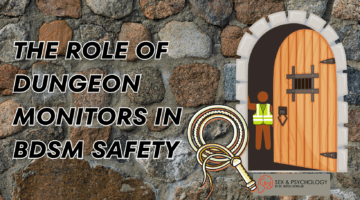What Do Sadists and Masochists Actually Do In Bed?
May 18, 2014 by Justin Lehmiller
In my last article, I discussed the prevalence of sexual sadism and masochism based upon results from the latest Reader Survey. This survey revealed that 50% of readers reported experiences with sadism (i.e., deriving sexual pleasure from giving pain) and 51% with masochism (i.e., deriving sexual pleasure from receiving pain). The goal of this article is to explore in more depth and detail how sadomasochism is actually experienced among readers who completed the survey. Specifically, what type of pain was most common (physical vs. psychological), and how intense was it? And what types of sadomasochistic acts were practiced most frequently?
If we look first at those who reported previous experience with masochism, most said that the pain was physical in nature (64%), with fewer describing the pain as both physical and psychological (33%), or as psychological only (3%). In addition, most said that the pain was only mildly intense or not at all intense (62%), while 26% described the pain as “somewhat intense” and only 12% described it as “extremely intense.”
The numbers were almost identical for those who reported previous experiences with sadism: most described the pain as physical in nature (66%), with the rest describing it as both physical and psychological (32%) or psychological only (2%). Also, most described the pain as mildly intense or not at all intense (65%), with 27% describing the pain as “somewhat intense” and just 8% describing it as “extremely intense.”
Next, participants were asked what specific sadomasochistic acts they had previously engaged in. Six specific activities together comprised more than two-thirds of all sadomasochistic acts reported: spanking (17%), bondage (12%), use of masks or blindfolds (11%), biting (11%), use of handcuffs (11%), and verbal humiliation (8%). The prevalence of these activities is not particularly surprising in light of the results above, which suggest that the pain employed in most cases is typically only mildly intense or not at all intense.
The most intense activities inquired about on this survey (i.e., cutting, electric shocks, and piercing) together comprised just 2% of all sadomasochistic acts reported. Take a look at the table below for a closer look at how common each sadomasochistic activity was in this sample.

The results from this Reader Survey are consistent with most published research I have seen on sadomasochism in that both conclude that the vast majority of people who practice S&M are not into extremely intense or dangerous activities [1]. Indeed, it appears that the notion of “safe, sane, and consensual” is more than just a common saying and actually provides a true reflection of how sadomasochism is most frequently experienced in reality.
Want to learn more about Sex and Psychology? Click here for more from the blog or here to listen to the podcast. Follow Sex and Psychology on Facebook, Twitter (@JustinLehmiller), or Reddit to receive updates. You can also follow Dr. Lehmiller on YouTube and Instagram.
[1] Sandnabba, N. K., Santtila, P., Alison, L., & Nordling, N. (2002). Demographics, sexual behaviour, family background and abuse experiences of practitioners of sadomasochistic sex: A review of recent research. Sexual and Relationship Therapy, 17, 39-54.
Image Source: iStockphoto

Dr. Justin Lehmiller
Founder & Owner of Sex and PsychologyDr. Justin Lehmiller is a social psychologist and Research Fellow at The Kinsey Institute. He runs the Sex and Psychology blog and podcast and is author of the popular book Tell Me What You Want. Dr. Lehmiller is an award-winning educator, and a prolific researcher who has published more than 50 academic works.
Read full bio >


